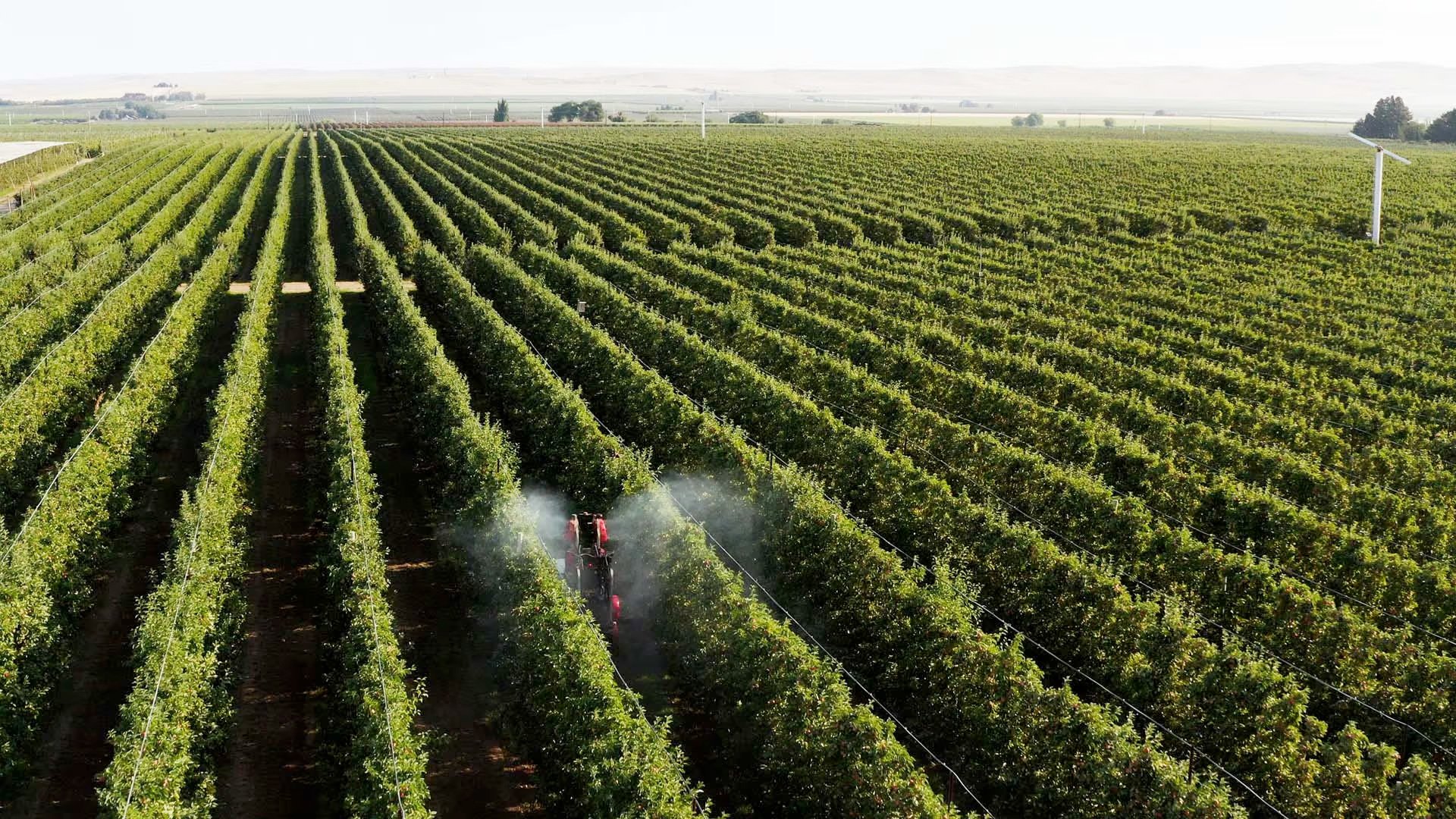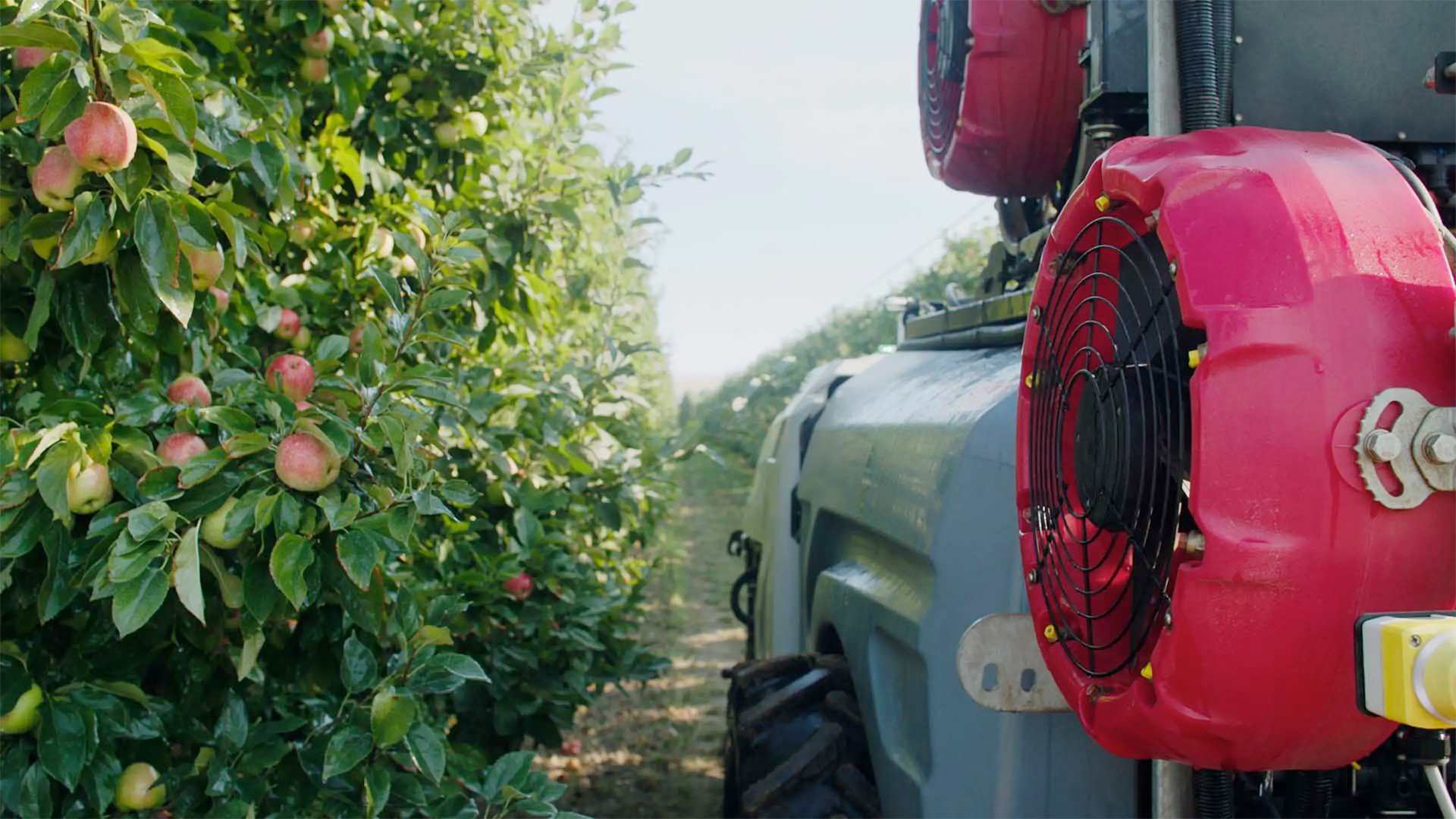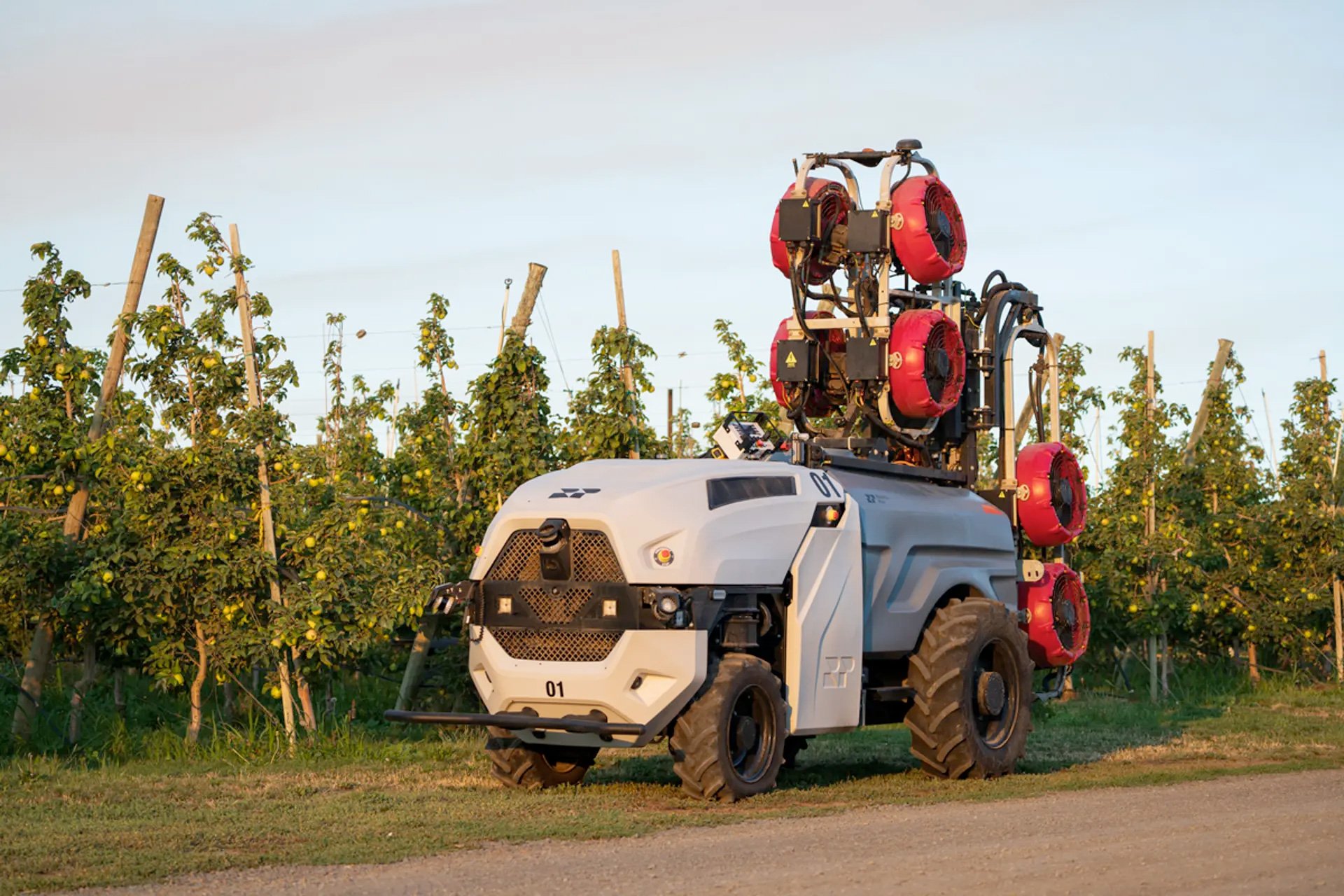Agricultural operations, particularly in orchards and vineyards, often rely on diesel tractors to spray herbicides and pesticides. However, this process contributes significantly to emissions and can result in overuse of chemicals. To address these issues, New Zealand agritech company Robotics Plus has developed Prospr, an electric, autonomous crop-spraying robot that aims to make the spraying process more efficient and eco-friendly.
The Prospr robot, equipped with an all-wheel-drive system, was first introduced at the FIRA agricultural robotics show in California last September. Since then, it has entered commercial use in New Zealand, Australia, and the United States, helping to reduce both fuel consumption and herbicide application.
The robot features a refillable spray tank, multiple spray fans, a battery pack, and a diesel generator, allowing it to adapt to different spray jobs. For shorter tasks, Prospr runs entirely on battery power. However, for longer jobs, the diesel generator kicks in to provide continuous power, enabling the robot to work throughout the day without needing to recharge or refuel. According to Robotics Plus, this setup allows the Prospr robot to consume up to 72% less fuel than traditional diesel tractors performing the same tasks.
Navigation and safety are critical features of Prospr’s design. Guided by GPS, the robot autonomously moves through rows of trees or vines, spraying crops on both sides. It utilizes LiDAR sensors and cameras to detect obstacles in its path, and it can either slow down or stop if necessary. Additionally, a pressure-sensitive bumper on the front of the robot ensures it stops when encountering resistance. As a final safety measure, an emergency stop button is accessible on the robot itself.

One of the robot’s standout features is its patented steering mechanism, which enables it to make tight turns at the end of each row, ensuring seamless transitions as it moves from row to row. This maneuverability is particularly beneficial in narrow spaces such as vineyards and orchards.
The Prospr robot offers flexibility in how it applies chemicals. Users can swap out different types and numbers of spray fans and program the machine to apply specific amounts of herbicide or pesticide depending on the area being treated. This customization minimizes chemical use, reducing environmental impact and operational costs. Additionally, users can monitor the progress of multiple Prospr units via a control panel on a laptop or tablet, and they can even take manual control if needed.

Prospr will be making another appearance at the FIRA show in Sacramento this week, providing an opportunity for interested parties to see the robot in action.

Source: Robotics Plus



